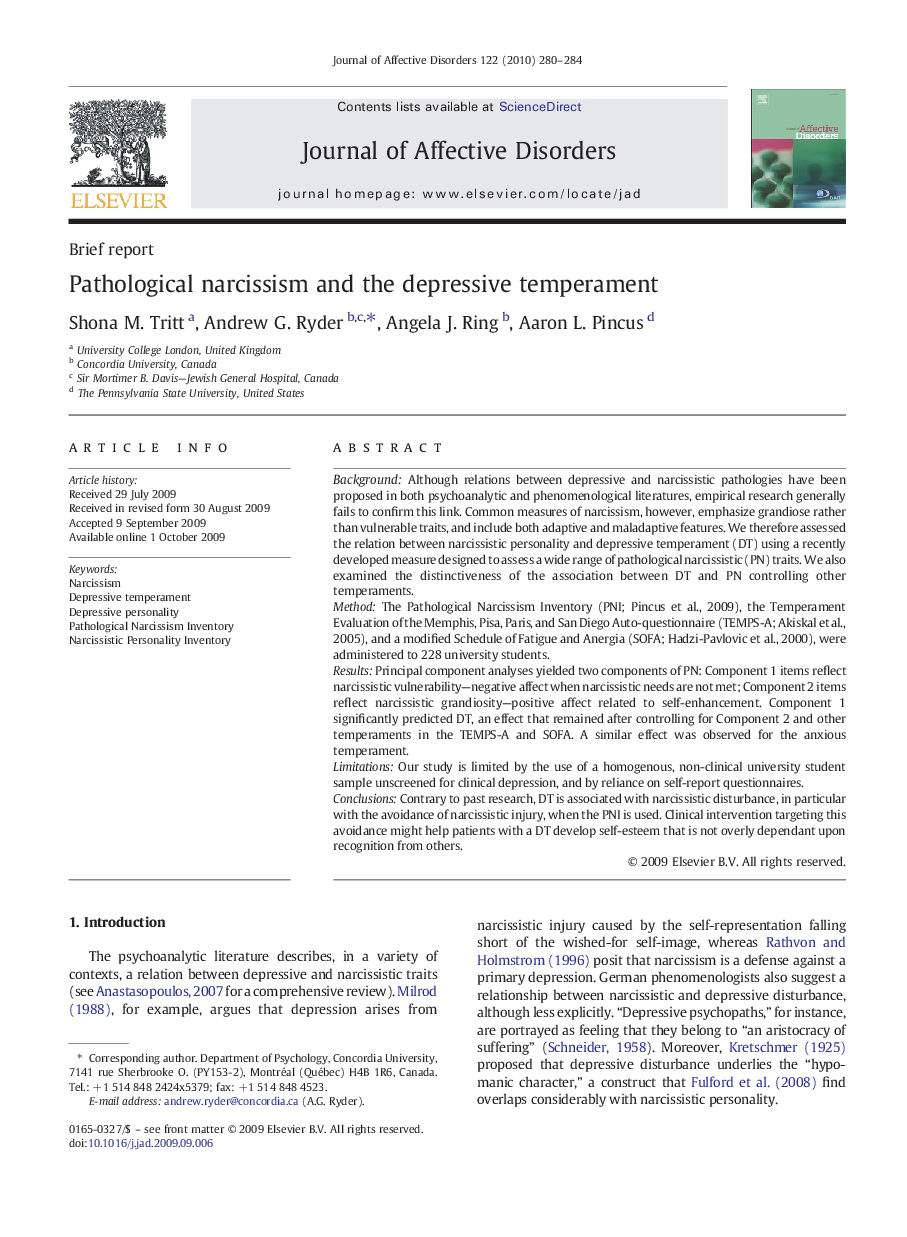| کد مقاله | کد نشریه | سال انتشار | مقاله انگلیسی | نسخه تمام متن |
|---|---|---|---|---|
| 4186874 | 1277610 | 2010 | 5 صفحه PDF | دانلود رایگان |

BackgroundAlthough relations between depressive and narcissistic pathologies have been proposed in both psychoanalytic and phenomenological literatures, empirical research generally fails to confirm this link. Common measures of narcissism, however, emphasize grandiose rather than vulnerable traits, and include both adaptive and maladaptive features. We therefore assessed the relation between narcissistic personality and depressive temperament (DT) using a recently developed measure designed to assess a wide range of pathological narcissistic (PN) traits. We also examined the distinctiveness of the association between DT and PN controlling other temperaments.MethodThe Pathological Narcissism Inventory (PNI; Pincus et al., 2009), the Temperament Evaluation of the Memphis, Pisa, Paris, and San Diego Auto-questionnaire (TEMPS-A; Akiskal et al., 2005), and a modified Schedule of Fatigue and Anergia (SOFA; Hadzi-Pavlovic et al., 2000), were administered to 228 university students.ResultsPrincipal component analyses yielded two components of PN: Component 1 items reflect narcissistic vulnerability—negative affect when narcissistic needs are not met; Component 2 items reflect narcissistic grandiosity—positive affect related to self-enhancement. Component 1 significantly predicted DT, an effect that remained after controlling for Component 2 and other temperaments in the TEMPS-A and SOFA. A similar effect was observed for the anxious temperament.LimitationsOur study is limited by the use of a homogenous, non-clinical university student sample unscreened for clinical depression, and by reliance on self-report questionnaires.ConclusionsContrary to past research, DT is associated with narcissistic disturbance, in particular with the avoidance of narcissistic injury, when the PNI is used. Clinical intervention targeting this avoidance might help patients with a DT develop self-esteem that is not overly dependant upon recognition from others.
Journal: Journal of Affective Disorders - Volume 122, Issue 3, May 2010, Pages 280–284